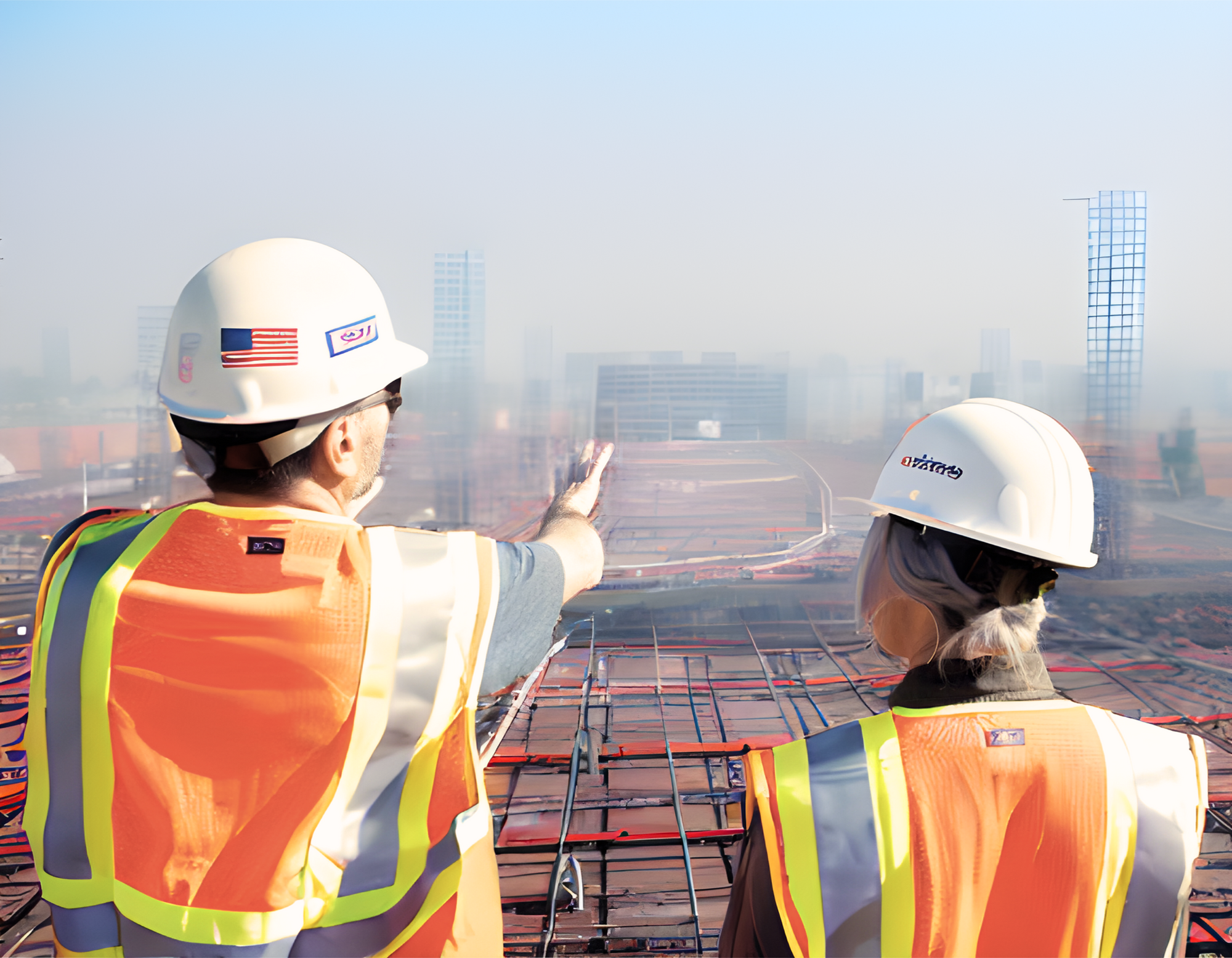Air Quality Monitoring for Cal/OSHA Wildfire Compliance
Wildfire smoke monitoring compliance streamlined to support your team’s safety.

Amid California's breathtaking landscapes and vibrant cities, a silent threat looms overhead – wildfire smoke, a hazard that not only poses environmental challenges but also jeopardizes the health and well-being of the state's workforce. Fine particulate matter (PM2.5) poses a significant health risk as its tiny size allows it to penetrate deep into the respiratory system, contributing to a range of adverse health effects, including respiratory and cardiovascular issues.
As the frequency and intensity of wildfires continue to escalate, so does the risk of exposure to the hazardous pollutants suspended in the air. Cal/OSHA issued an emergency regulation to address the urgent need to protect employees statewide.
What is Cal/OSHA’s wildfire smoke regulation, and who needs to comply?
Established by the California Division of Occupational Safety and Health (Cal/OSHA) in 2019, California Code of Regulations, Title 8, Section 5141.1 aims to protect employees from wildfire smoke exposure. The regulation applies to most outdoor workplaces where the current air quality index (AQI) for fine particulate matter, PM2.5 or smaller, is 151 or greater—which indicates an unhealthy level—and where employers should reasonably anticipate that employees could be exposed to wildfire smoke.
Under the regulation, employers must implement the following actions and systems:
- At the beginning of each shift and periodically as necessary, employers must determine employee exposure to PM2.5
- Employers must also implement systems for effectively communicating wildfire smoke hazards to employees
- They must provide thorough training to ensure their workforce is well-informed about both the risks and protection measures available
- To actively reduce employee exposure, employers are directed to employ various methods, including the operation of effective filtration systems, strategic adjustments to work schedules and locations, and the provision of respiratory protective equipment where needed. If employers are unable to reduce workplace AQI for PM2.5 to 150 or lower, NIOSH-approved respirators such as N95 masks must be made available for voluntary use.
Workplaces and operations exempted from compliance include:
- Enclosed structures and vehicles with operating ventilation systems, where openings are shut unless necessary for entry or exit
- Workplaces where the PM2.5 concentration is proven not to exceed an AQI of 151, or where employees are exposed to a PM2.5 AQI over 151 for an hour or less during a shift
- Wildland firefighters

Applicable Air Monitoring Requirements
To determine your team’s exposure to PM2.5 at the beginning of each shift, you will need the respective current Air Quality Index (AQI), which is the EPA’s method for reporting air quality. Higher AQI values indicate increased air pollution and health risks.
Check current AQI forecasts for PM2.5 via the websites of the U.S. EPA AirNow, the Interagency Wildland Fire Air Quality Response Program, the Forest Service, the California Air Resources Board, your local air pollution control district, or your local air quality management district. Daily and forecasted AQIs are also available by text or email for particular cities and zip codes through the EPA’s EnviroFlash site.
An accurate alternative: Your own onsite sensor
While publicly available, AQI websites don’t reflect the air quality exactly where you are or at the precise moment you need data. Appropriately managing employee pollution exposure requires reliable, real-time data. Because of this, Cal/OSHA’s Section 5141.1 also allows for monitoring PM2.5 using a direct reading instrument—the best way to accurately estimate pollution exposure. An air quality monitoring sensor or localized network can help create an accurate reflection of air quality where your employees are breathing and working.
The selected PM2.5 monitor must meet the following requirements:
- Does not underestimate employee exposure to wildfire smoke
- Is designed and manufactured to measure ≤ 0.3μm to 2.5μm
- Is properly calibrated, maintained, and used according to manufacturer instructions
- Is used under the supervision of someone with the necessary experience or training in air quality monitoring
Then, use the table below to convert your recorded PM2.5 concentrations to the corresponding AQI:
Benefits to QuantAQ Sensors for Your Work Site
Designing an accurate PM monitoring plan to align with Cal/OSHA’s wildfire smoke regulation is simple with our science-driven air quality monitoring systems, in particular the MODULAIR-PM with its proprietary dual-detection PM capabilities.
Here’s how we can help:
Take safety action with confidence
Particulate Matter concentrations vary moment by moment and place by place, so capturing an accurate, timely view of exposure risks for your workforce can only be done with onsite monitoring. Ensure you’re taking action based on your site’s exact air quality profile, not measurements reported from nearby sites and potentially with consumer-grade equipment that may or may not meet your quality control standards.
Reliable, real-time data reflecting your exact working conditions
Prioritizing your team’s well-being means staying informed about your team's exposure to PM and acting promptly when harmful levels occur. Unlock real-time information to support safety measures in your dynamic local air quality conditions.
Make training a breeze
Minimal technical knowledge is needed for our user-friendly QuantAQ Cloud data management tool, making the training process seamless and accessible. Swiftly onboard team members to give them access to your intuitive dashboard with data for all connected sensors. They’ll be ready to report PM exposure with confidence from day 1!
Connect with our team to build your network optimized for regulation compliance.

